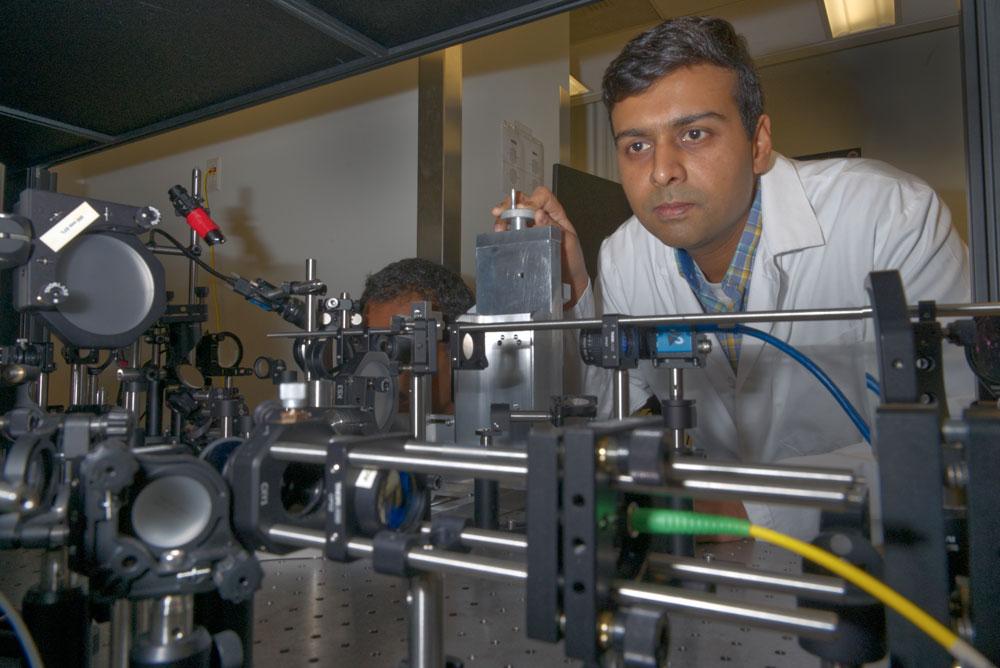
Sabesan Lab
The Sabesan lab investigates the functional mechanisms by which photoreceptors and their ensuing neural circuits mediate the most fundamental aspects of vision and how these visual capacities are affected by retinal diseases. To this end, the Sabesan lab develops and uses novel cellular imaging tools which enable the visualization of the structure and function of living retinal cells at unprecedented spatial scales.
The backbone of the methods pursued by the lab is a technology called adaptive optics – the same tool used by astronomers to peer at small objects in space. Using adaptive optics, one can overcome the optical imperfections that exist in the human eye converting the eyeball essentially into a microscope objective. By combining adaptive optics with other microscopy techniques, one obtains the ability to probe living cells in the retina of humans, which are about ten times finer than the diameter of a human hair. This allows the probing of retinal cells in diseased human eyes at high resolution, thus serving as sensitive biomarkers for early disease diagnosis and monitoring of cellular events involved in disease progression. Ultimately, the lab’s overarching goals are to develop novel, sensitive, and objective outcome measures for vision restoration techniques aimed at repairing blinding eye diseases.
For more information, visit the Sabesan Lab website.
